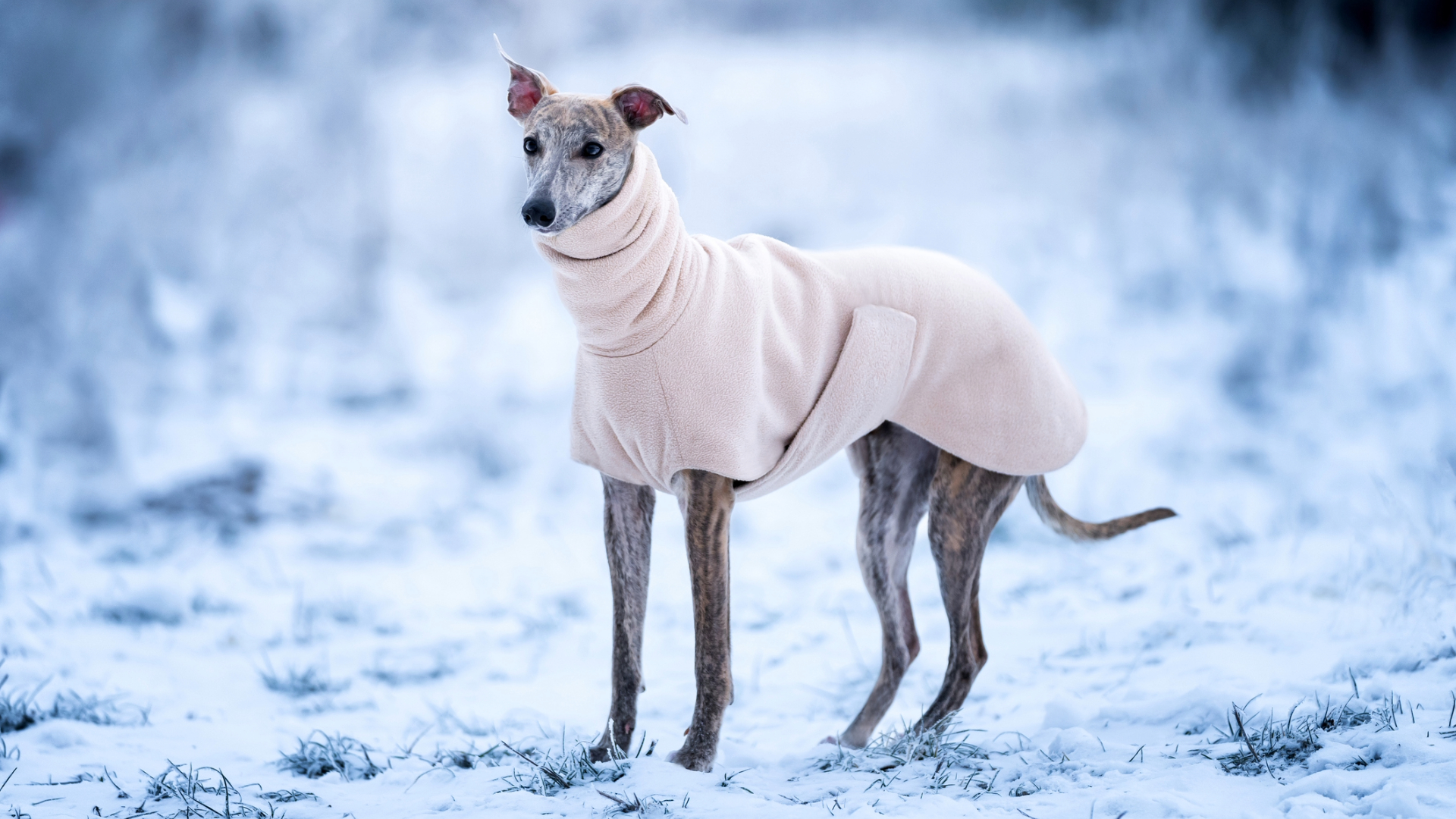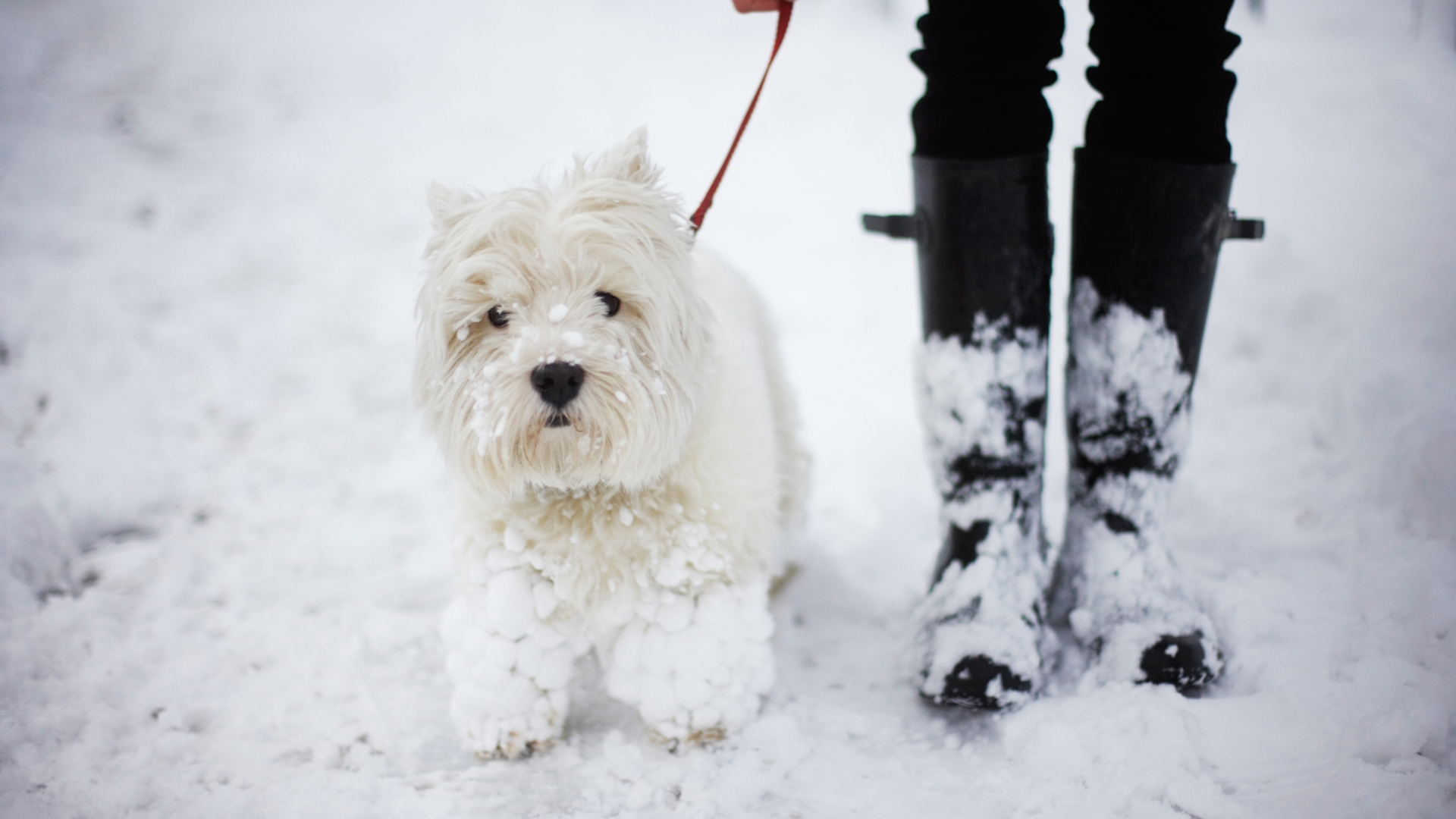What temperature is too cold to walk a dog? A vet answers
What temperature is too cold to walk a dog? An expert shares her top tips for safe winter walking.

Are you wondering what temperature is too cold to walk a dog? Cold winter weather can be brutal for our furry friends braving the elements. Owners can easily reach for coats and gloves, but our canine companions don't have the same luxury.
Walking dogs in extreme temperatures, hot or cold, can be very dangerous. Knowing when it is too cold to walk your dog is crucial to prevent injuries and health problems. If you want to warm your pooch up afterward, you could try one of the best heated pet beds.
Below, expert Dr. Emma Chandley has explored the risks of cold weather exposure to dogs and shared her top tips for safe winter walks. Emma is a practicing vet with over 13 years of experience in small animal surgery and medicine. She has been a dog lover and owner her entire life.
What temperature is too cold to walk a dog?
Walking your dog is the perfect way to keep them active and happy, but it's very important to be mindful of the weather when venturing out. Extremes of temperatures, either hot or cold, can pose a risk to your dog's health and is especially true for dogs that are small, elderly, or puppies.
Smaller breeds and any breed with less hair will generally not be able to withstand temperatures lower than around 32°F due to their surface area-to-volume ratio. Their smaller bodies have less insulation and lose heat faster.
Short-coated breeds of dogs such as Dalmatians, Dobermans, greyhounds, whippets, and boxer dogs are more likely to feel the cold than dogs with big thick fluffy coats such as Newfoundlands, Huskies, or Bernese Mountain Dogs.

Larger breeds and dogs with thicker coats will be able to tolerate temperatures slightly lower - down to about 24°F. Any time it is colder than 20°F, all dogs are at risk of serious health issues.
Get the best advice, tips and top tech for your beloved Pets
The age of your doggo affects how well they can cope with cold temperatures. As dogs grow older, their metabolism slows down. This means they are less able to regulate their body temperature. Older dogs are more likely to be suffering from conditions like arthritis and cold weather can exacerbate their symptoms.
Young pups are more susceptible to the cold as they tend to have a smaller body mass and less surface area to generate heat. They often have an immature fur coat which is less effective at insulation. Puppies usually have a higher metabolism which means they can rapidly lose heat in colder conditions.
If you are unsure what the exact temperature is, a good general rule is that if it feels too cold for you to be outside for an extended period, it's going to be too cold for your dog as well. If in doubt, don't go out. Bear in mind there are individual differences between dogs. Some temperatures may feel comfortable to one dog yet they may not be acceptable for another.
Different weather conditions will suit different dogs; we also have a feature that answers, 'Can I go for a dog walk in the rain?'
What happens if a dog is too cold?
It can be very dangerous if your dog becomes too cold. In fact, it's one of the most common mistakes pet owners make.
Owners must keep a close eye on their canine companions when the temperature drops; this way you can quickly pick up on any changes that might indicate they are too cold. Signs your dog is beginning to get too cold include:
- Shivering/trembling
- Crying or whining
- Licking paws excessively
- Holding paws off the ground
- Feeling cold to touch
- Tucking tail under body
- Hunched back
- Reluctant to go outside if indoors
Some of the more serious risks of becoming too cold include:
1. Frostbite
A very unwelcome complication of being too cold is that dogs can develop frostbite. This is when parts of their body become damaged due to exposure to extremely cold temperatures. It usually occurs at the extremities of the body in areas such as the ears, nose, tail, paws, and toes. If the frostbite is severe, it can cause parts of the body to die and drop off.
Frostbite in dogs can occur very quickly in certain conditions so it is important to keep checking on your dog if you are out in the cold. Clinical signs of frostbite to look out for include:
- Sensitivity to touch: Your dog may yelp or show signs of discomfort when you touch the affected area
- Loss of sensation: They may also lose sensation and not be able to feel anything at all
- Stiffness: The area may become stiff or hard
- Pale or bluish skin: Often the first sign of frostbite, most noticeable in areas such as the ears, paws, tail, and nose
- Swelling: The area may swell up
- Blisters: The area may become blistered and sore
- Coldness: The skin will feel freezing cold to the touch
If you think your dog may be suffering from frostbite, it is important to seek veterinary attention immediately. Please don't try to treat it at home, if the area is heated up too quickly, further damage can occur.

2. Hypothermia
Hypothermia occurs when the body temperature drops to a dangerously low level. This can happen very quickly in smaller breeds of dogs, puppies, and older dogs. If a dog gets hypothermia and they do not receive treatment, there can be serious complications such as organ damage and it can even result in death. Clinical signs of hypothermia include:
- Violent shivering: This is often the first sign seen
- Lethargy: Your dog may appear very tired and not move about much
- Weakness: Your dog may be unable to walk or stand
- Breathing difficulties: Your dog may struggle to breathe normally
- Pale skin and pale gums: Your dog may be very pale or have a bluish tinge to their skin.
- Low heart rate: You may be able to feel your dog's pulse and it may become very slow.
If you are worried that your dog may have hypothermia, seek help from your vet immediately.
How to walk your dog in the cold weather
Walking your dog is an important part of their daily routine. Benefits include exercise, mental stimulation, and an opportunity to socialize with other dogs and bond with their owner.
However, it can be challenging during the colder months to walk our canine companions. Here are some tips to make it safe and enjoyable for everyone involved:
- Limit the duration of the walk: Shorter walks are often better in cold weather, especially for smaller breeds or dogs with short coats.
- Avoid walking your dog during the coldest parts of the day, such as early morning or late evening. Try to walk when the sun is out of possible.
- Dress your dog appropriately: If your dog will tolerate it, use a dog sweater or the best dog coat. This can add an extra insulating layer to keep the heat in.
- Protect their paws: Paws are prone to frostbite. Use boots or paw wax to protect your dog's paws from the cold ground. Here’s more info about how to protect dog paws in winter.
- Avoid icy surfaces: If possible, walk on sidewalks and paths that are clear of ice and snow. Icy surfaces can be dangerous for dogs and owners, as they can cause slips and falls.
- Pay attention to your dog's body language: If your dog seems uncomfortable or starts shivering, cut your walk short and get them somewhere warm.
XSY&G Dog Boots
These adorable boots will protect your dog's feet from harsh weather conditions, like snow or heat. They're available in multiple different sizes and have a slip-on design.
By following these tips, you can help ensure that your dog enjoys their walks even in colder temperatures.
You might also want to read: Do dogs get cold?
Emma Chandley is a vet with 14 years of experience and has a keen interest in surgery. After graduating from the Royal Vet College in London in 2011, she achieved a postgraduate certificate in small animal surgery from the British Small Animal Veterinary Association and Nottingham Trent University. She was then awarded advanced practitioner status in the same discipline by The Royal College of Veterinary Surgeons. She has a black Labrador and two pygmy goats at home.


